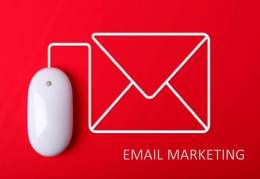How To Make More Money With Fewer Patients
/If you want to make more money with less patients, then this is for you...
Most clinics are missing out on massive profits because they operate on an "Á La Carte" basis.
They're primarily selling one-off treatments, when they could be selling full treatment packages and continuity programs that deliver the best results while making them the most money....
... Of course everyone wants to sell more complete packages and get pre-payment for them, but getting patients to understand the value of combination treatment can seem like an uphill battle.
I get it!
I struggled selling treatments Á La Carte for years. Patients are usually interested in only ONE treatment (because that's all they've had heard of) and think that’s what they need to get great results....
I actually thought I was doing them a favor by not "bugging them" with other options and simply gave them what they want.
Boy, was I wrong...
The thing is, what patients want, and what they need are often completely different things!
The challenge is getting patients to want what they need.
One of the most effective ways to overcome this hurdle is through the art of Cosmetic Ju-Jutsu.
Allow me to explain...
Let’s first establish what the word “Ju-Jutsu” means:
""Jū" can be translated to mean "gentle, soft, supple, flexible, pliable, or yielding". "Jutsu" can be translated to mean "art" or "technique" and represents manipulating the opponent's force against themselves rather than confronting it with one's own force.” (taken from Wikipedia)
Ju-Jutsu is widely considered one of the most effective martial arts because it doesn’t rely on brute strength, and instead leverages the opponents existingforces in your favour.
Cosmetic Ju-Jutsu works just the same... the only difference is that you're using your opponent's (the patient’s) own force to help them, not harm them.
You see, behind every patient who comes into your clinic is a certain force, or intent, that has motivated them to take action...
It’s your job as a treatment provider to redirect this force in the most efficient manner possible in order to lead them to the best possible outcome....
For me, I always want to schedule in new patients for a paid, one hour skin analysis and consultation where I can educate them and present a complete treatment package.
Here’s an example of how I do this:
Recently I had a 60 year old lady come in because her friend who was in my office looked great. This lady wanted filler because that’s what her friend had, not knowing the full details of her friend's complete treatment program.
In the past I would simply say this:
“Oh, you need about 3 syringes of filler in your cheeks and marionette lines, let's go ahead and book that. We can even do it today if you want.”
This would have resulted in a quick $1800 sale for 3 syringes. Instant gratification for her and a quick sale for me, but a lost opportunity to make a bigger sale and get a better outcome.
Here’s what I say now:
“You’re right - you absolutely need filler, and I could even get you booked in right now, but I’d be doing you a disservice because you’d be missing out on much better results....
The best thing to do here is to schedule a full hour where we can sit down and really go over your skin in detail. I have a special camera that show's you the 8 different skin aging factors, and we can also talk about all the exciting treatment technologies available to make you look your absolute best.
By the end, you’ll be an expert on taking care of your skin and if you’re open to it, we can even put together a special treatment program customized just for you.
The cost of this appointment is $95 right now, but we’ll turn that investment into a $100 certificate that you can put towards treatment. The only reason I charge $95 is it means you’ll actually show up. Does that seem fair?”
Patients usually laugh at the last part because they appreciate the honesty of why I’m charging for the appointment, and then about 80% agree to move forward.
Not surprisingly, instead of purchasing 3 syringes of filler, this lady ended up purchasing a complete package that included 4 syringes of filler, Botox for her forehead lines, a series of 3 BBL treatments and a home care package.
This same scenario plays itself out on a daily basis and it’s transformed my practice.
Whenever I see a new patient, I’m always thinking, "how can I get this patient to see the value of a paid, one hour consult? How can I get them to prepay for this appointment and make it seem like it was their idea?”
It’s important to never correct or disagree with the patient because that would be confronting them with your own force instead of redirecting theirs.
If you ever make a patient feel stupid, misinformed, or pressured, their guard will go up and you will lose.
This is the art of Cosmetic Ju-Jutsu. It takes practice because it requires the ability to read the patient and adjust your approach accordingly, but it’s absolutely worth the effort of learning.
So next time you’re tempted to blame your marketplace for not “getting it”, consider this strategy and see if you can get more patients to see the light.
- Peter Ursel MD








